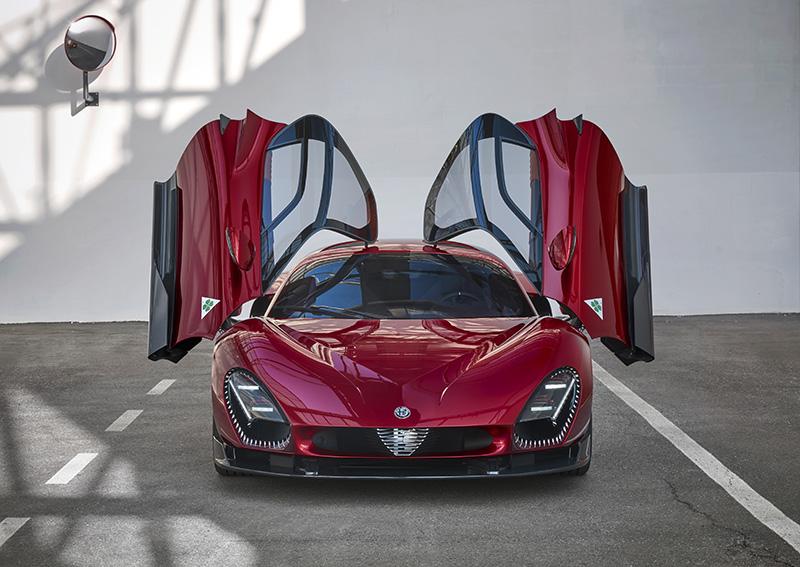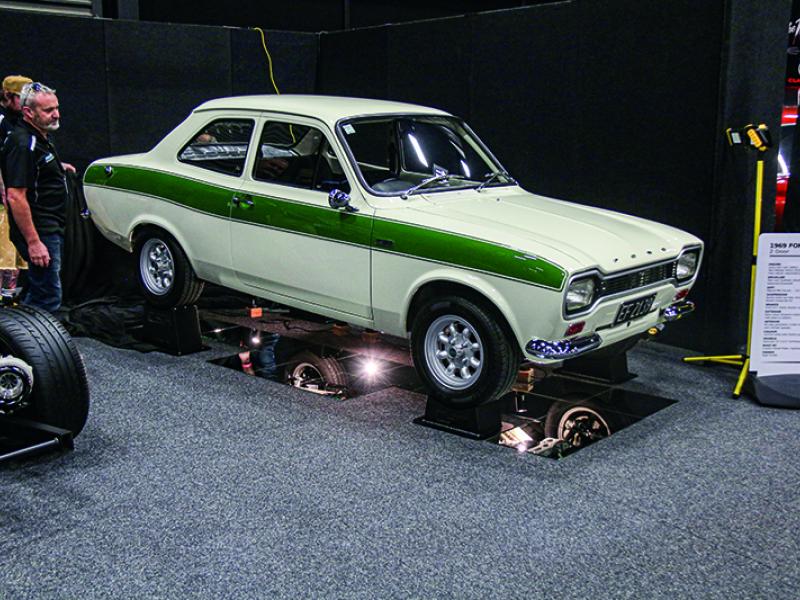Alfa Romeo is delighted to announce the rebirth of the custom-built 33 Stradale, a veritable “manifesto” of the Italian brand’s capabilities – now and in the future – in terms of style and driving experience. Made in only 33 exclusive units, according to a unique artisan process, the new “two-seater” coupé combines the brand’s heritage and future as the symbol of noble Italian sportsmanship.
The new 33 Stradale was created at the newly founded Alfa Romeo “Bottega”, where the brand’s designers, engineers and historians first listened to potential buyers, then produced the car together, exactly the same way as in Renaissance artisan boutiques and in the 1960s workshops of renowned Italian coachbuilders.
The epitome of “necessary beauty”
Produced by the Alfa Romeo Centro Stile, the new 33 Stradale is inspired by the historic 1967 model, with enrichments to its sculptural beauty with certain design elements from Alfa Romeo’s new language of style. The profile is dynamic and slender, with doors with an “elytra” opening and two large air inlets on the side. The aerodynamic efficiency is confirmed by a Cx of 0.375 at zero Cz (downlift) – for precise choice without the aid of active systems.
The new Alfa Romeo special edition can be fitted with a V6 twin-turbo engine or can come in a BEV configuration. Performance is outstanding in both versions. The double-arm suspension with active shock absorbers and the front axle lift ensure handling and comfort. The Alfa Romeo Brake-By-Wire braking system and Brembo carbon-ceramic brakes offer high-level performance.
The car’s tuning will be supported by F1 driver Valtteri Bottas on the legendary Balocco track, thus bringing F1 experience into everyday driving and ensuring Alfa Romeo’s unmistakable handling.
Technicals – an unforgettable driving experience
The Alfa Romeo team dedicated to the new 33 Stradale was assigned an ambitious goal: to offer a driving experience as a track car but in everyday use on the road, where the driver could experience excitement even as a non-professional.
ICE and BEV configurations: the 33 Stradale can be fitted with a 3.0-litre V6 twin-turbo engine with over 620 hp and an eight-speed DCT gearbox, rear-wheel drive and electronic limited-slip differential, or in BEV configuration delivering over 750 hp, with an estimated range of 450 km (WLTP). In detail, the internal combustion engine is the evolution of the V6 already fitted to the Italian brand’s highest-performance cars and it is longitudinally mounted in the center and enables the car to reach a top speed of 333 km/h, accelerating from 0 to 100 km/h in under three seconds. Not to mention the fact that the rider can select the drive mode using the switches on the central tunnel: Road and Track. The former is Strada (‘Road’) mode, engaged when the car is started, which ensures comfort and driving pleasure: smooth power delivery, usual pedal sensitivity, soft suspension, fluid transmission and active exhaust valves open only above 5,000 rpm. In “Pista” (‘Track’) mode, the customer chooses an adrenaline-fueled drive: the power is at its peak, the pedals are even more responsive and the suspension is rigid; Furthermore, in this drive mode the driver can choose to deactivate all the traction control (ESC OFF).
H-frame aluminum chassis and carbon fiber monocoque: dynamic development and tuning are carried out by exploiting the flexibility offered by the rigid and light structure of the 33 Stradale, for which extensive use has been made of lightweight materials, the result of a production that combines high-tech processes with the most rigorous craftsmanship. In detail, the H-frame is made of aluminum to obtain maximum torsional rigidity and to guarantee a precise and safe ride, while the monocoque is made of carbon fibre. The choice was motivated by the need to reduce weight as much as possible but also to optimise the car’s center of gravity to the advantage of agility and drivability on the most demanding routes. Again to ensure high qualities of rigidity and safety, a roof structure has been engineered in carbon fiber and aluminum, with specially developed hinges for the butterfly doors. The window frames are also made of carbon fibre, with the rear window in polycarbonate.
Front axle lift: the system enables the lifting of the front when passing obstacles, such as bumps, rails or when entering parking lots or garages, to avoid damage to the bodywork. The driver can activate this function via the “Assetto” (‘setup’) control on the central console, when driving at under 40 km/h. The hydraulic system raises the front axle by about 50 mm to overcome the obstacle, then returns it to the standard height by manually deactivating the system or when exceeding the speed limit set.






